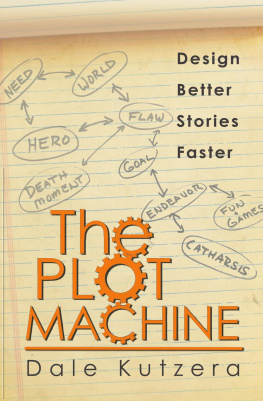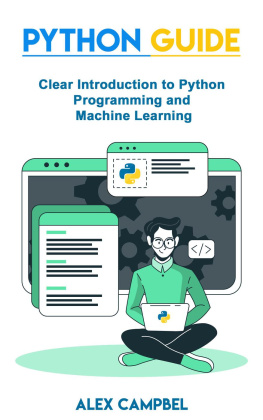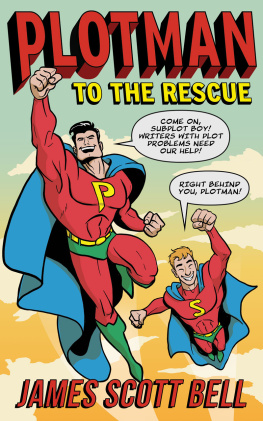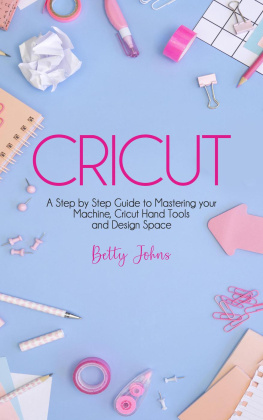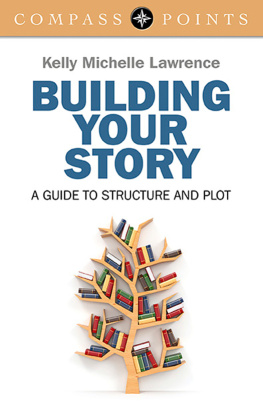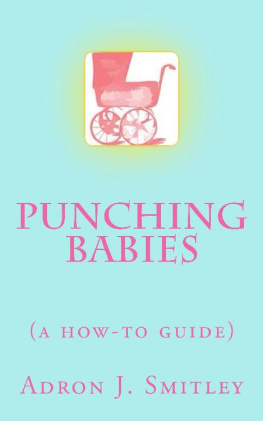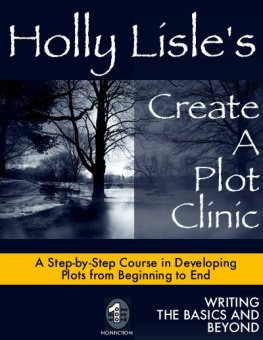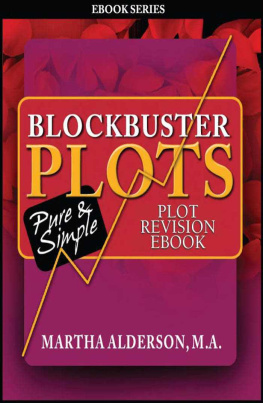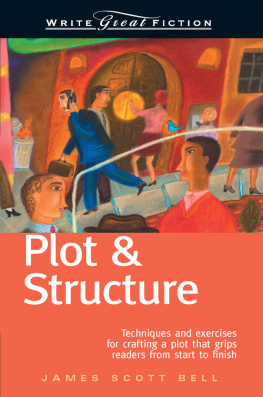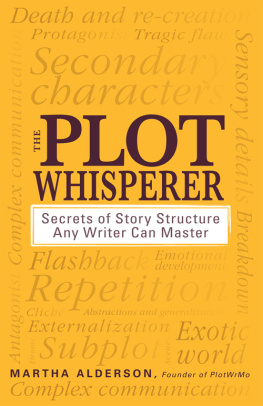The Plot Machine
Copyright 2015 by Dale Kutzera. All rights reserved.
Published by Salmon Bay Books.
Cover and Interior Design by Dale Kutzera.
All rights reserved. No part of this book may be reproduced in any form or by any means without permission in writing from the publisher, with the sole exception of brief excerpts used in a review.
In accordance with the U.S. Copyright Act of 1976, the scanning, uploading, and electronic sharing of any part of this book without the permission of the author constitute unlawful piracy and theft of the authors intellectual property. If you would like to use material from the book (other than for review purposes), prior written permission must be obtained by contacting the author at info@DaleKutzera.com. Thank you for your support of the authors rights.
www.DaleKutzera.com
Contents
The Plot Machine
Introduction
Part One: Stories
The Role of Stories in Society
Story Taxonomy
Design Principles
Part Two: Elements
Starting the design
Heros Goal
Heros Endeavor
Who is Your Hero?
Traditional Story Structure
General Framework
Framework Subdivisions
Framework Variations
Finding Connections
Defeat to Victory
Normal World to Endeavor
Endeavor and Heros Arc
Five Case Studies
B ooks on story structure typically describe the three-act framework and thats about it. They break stories down into traditional parts and sub-parts and present lists of necessary components. They may even reverse-engineer novels and movies to illustrate how structure has been successfully employed. This is great to a point, but reverse-engineering stories doesnt help you write your story.
What you need is a sequence of steps that takes you from blank page to working outline. What you need is a design process...a Plot Machine .
I use the word design because it is helpful to think of this process as separate from the act of writing. Lets say you crash on an alien planet. Your spaceship is wrecked, but several aliens pull you to safety and promise to build a house for you to live in.
Three things must happen. First, you must describe to the aliens what a house is and the function it serves to keep you warm and dry. Second, you have to understand the physical components of a housefloor, walls, roof, and doorsand how they are arranged. Lastly, you have to evaluate the materials on this strange planet and determine how they might be used to make a home. Perhaps some trees could be used for beams and some crystal for windows.
The process is the same in designing a story. You have to know what a story is and the function it serves in society. You need know the various components that comprise a traditional narrative: characters, situations, goals, obstacles, and themes. And then you must evaluate the ideas you have and determine how they can be arranged in an overall design.
Is story design essential? Probably not. Many writers dive into prose with just a few story elements in place. They make their plots up on the fly, or by extensive editing after a mountain of prose has been written. Theres nothing wrong with this process, but it isnt very efficient. And todays writers, whether traditionally or independently published, recognize the importance of quantity as well as quality.
If you desire the rewards of building a large audience for your writing, then design skills will help you create a steady flow of stories. This guide is intended to help writers design better stories faster, resulting in cleaner first drafts and greater productivity.
This book starts off with an introduction to stories and their function in society. We will review a hierarchy of story-types and cover the general parameters of their design.
Part II begins the design process by assembling the major elements of a story. Part III introduces the traditional story structure upon which story elements are arranged. Part IV examines the challenging task of arranging parts into well-connected sequences. Part V presents a few case studies of using these design principles to break a handful of different story-types.
Story design is the art of arranging elements in a compelling order. Just as architects design a collection of volumes, writers design events and emotions. No guide can tell you what story to write or how to write it. Your personal artistry it the X-factor that only you can provide. A few coins in the plot machine, however, will provide options, perspective, and most important, a reliable process.
Lets get started.
Stories

I f you added up the amount of time human beings read books, watch TV and movies, go to the theater, or just chat around the water cooler, dinner table, or campfire, you may determine that telling stories is the primary human activity. Every society in every corner of the world tells stories.
Why are stories so central to human life?
Because they are our best survival skill.
We lack coats of fur, defensive horns, and sharp claws, but we have stories. For a hundred thousand years, homo sapiens have passed information through stories, myths, fables, and legends. They help us find food and mates, survive predators and natural disasters, and understand the world around us.
Those individuals that failed in this critical skill (Yes, Im talking about you, Neanderthals!) were less likely to survive and procreate. You can, therefore, make a strong claim that modern humans evolved to be story-tellers and story-consumers. We seek stories just as we seek food and water.
In our modern world stories are more about entertainment than survival, but the primitive need they satisfy remains active in our dinosaur brains. Seen in this light, the value of any story is not in the story itself, but the information and wisdom it conveys to the consumer.
At its most basic form, a story is a recounting of events. It might be what you did at work, something that happened over the weekend, or what you did over summer vacation. Some stories are short, others long. Some merely recount unrelated events like a laundry list of items, while others present a sequence of related incidents that add up to some insightful conclusion.
Next page
